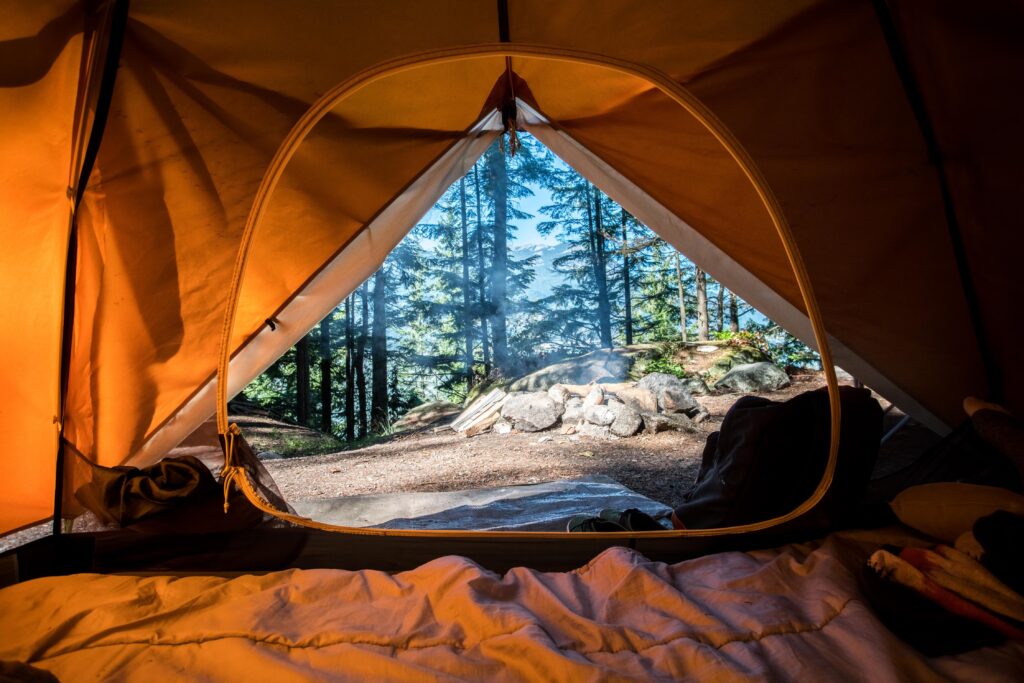Are you ready to move from day hikes to backpacking and camping in the wilds of the backcountry? From alpine touring in the Alps to hiking in the Pacific Northeast, conquering the backcountry can be an unforgettable experience. Keep in mind the elements can be harsh and unrelenting. But with the right planning, discomfort doesn’t have to mar your memories. Elevate your experience with these six tips for staying comfortable in the backcountry.

1. Pack Clothing for Layering
If you have any hiking experience, you know that temperatures change during the day as the weather, sun exposure, and altitudes vary. And your body temperature rises with exertion.
The rule of thumb is the pack three layering options for quickly and efficiently adapting your clothing. Wear a thin t-shirt made of sweat-wicking synthetic material as a base layer. Add a mid-layer of wool for warmth, and wear a softshell jacket to protect you from wind and precipitation. A lightweight one will keep you from overheating while hiking.
When you dress for the day, start cold. Your body will reach a standing heat in 30 minutes. Add or remove layers during the day to maintain a core temperature and minimize body heat lost through sweating.
2. Pack the Right Gear
If you’re serious about adventures in the great outdoors, buy the best gear you can afford. Thanks to technology, many advances have been made in camping and equipment, but you must pay for quality.
Finding a backpack that is comfortable, lightweight, and durable is easy these days. Look for one that is expandable, adjustable, and has padded shoulder straps.
The same is true for sleeping bags. They’re made to be able to compress down to the size of a loaf of bread. Get one that is rated for 15 degrees Fahrenheit and wear a fleece-lined zip-up suit to bed. Keep your feet warm with a thermos full of boiled water at the foot of your sleeping bag.
3. Choose a Proper Tent Site
The proper campsite will be crucial to your comfort. Choose one that is flat and check for rocks, roots, and sticks that may jab you. Spread a plastic ground cloth over it for protection from rain and ground moisture. Adding a sleeping bag pad will add an extra layer of comfort. This will likely be the heaviest item in your backpack, so choose one that is lightweight.
Don’t pitch your tent underneath risks like dead or overhanging limbs. This can spell disaster, especially in windy conditions.
4. Take Steps to Stay Dry
It will be hard to stay comfortable if you and your gear get wet. To stay dry, begin by lining your backpack with a plastic trash bag. Use Ziplock bags to compartmentalize stuff. Invest in a waterproof roll-top dry compression sack to protect your gear.
If you’re carrying anything with down insulation, take care to protect it from moisture from the weather or sweat. If you buy a down sleeping bag, look for one that mitigates moisture such as hydrophobic down.
If your things do get wet, take a break when the sun comes out and spread them out to dry.
.
5. Plan for Good Eating
Calories are heat units, and you need them to regulate your energy levels and core temperature. Make plenty of snacks easy to access in your backpack.
You can make this easier by prepping food before your trip. Cut up veggies in baggies and stash them in your backpack or hip belt along with granola bars or trail mixes and plenty of water. Pack enough to grab a snack every hour and drink the right amount of water to stay hydrated.
As for meals, freeze-dried foods are your best bet. They come in lots of flavor options, and all you have to do to prepare them is add boiling water to the pouch. Be sure to drink extra water because freeze-dried foods tend to dehydrate you quickly.
6. Take Care of Your Feet
Needless to say, it’s very important to take care of your feet while exploring the backcountry. Like your gear, don’t scrimp. Buy the best pair of hiking boots you can afford. Tired, sore, or injured feet will throw off your balance and affect your whole body.
Wear a comfortable pair of shoes on the drive to the trailhead and then change into your hiking shoes or ski boots.
Take frequent breaks to rest your feet, and never hike in wet socks. Take off your boots, remove your socks and insoles and let them air out.
Don’t leave your boots outside in the weather. Sleep with them inside your tent or sleeping bag.

